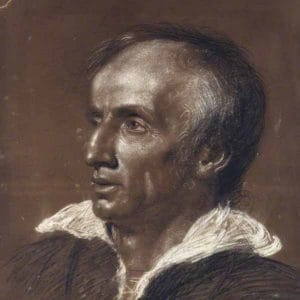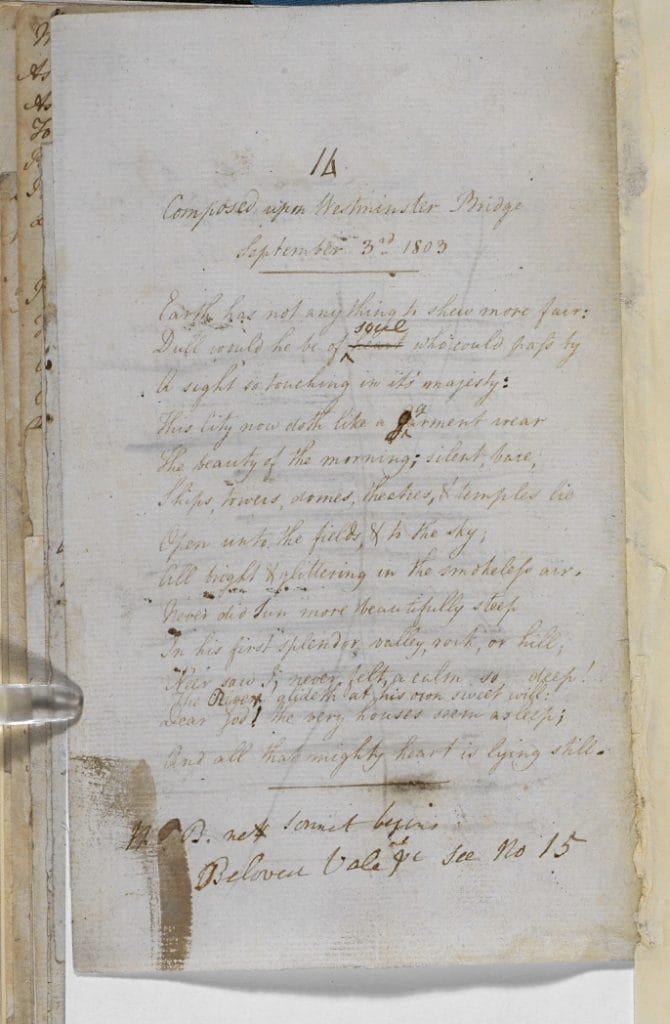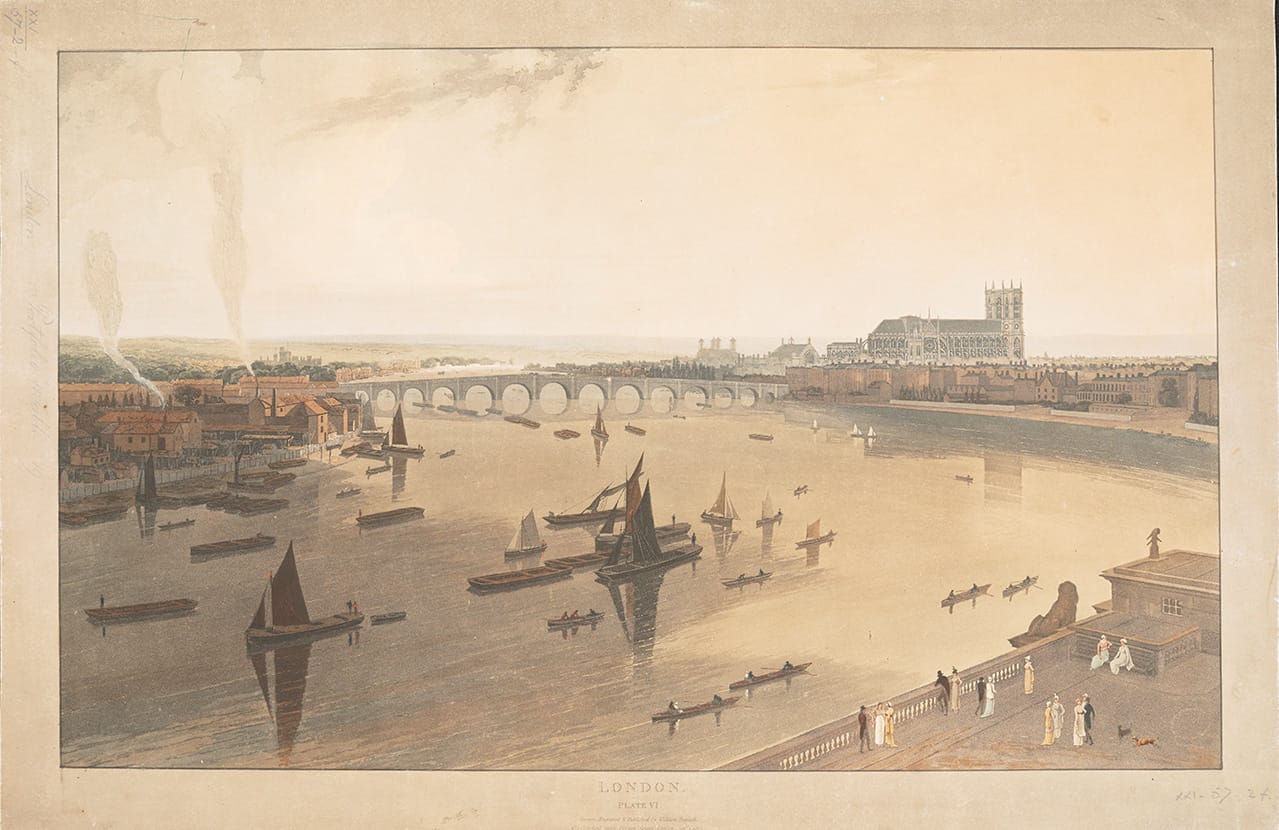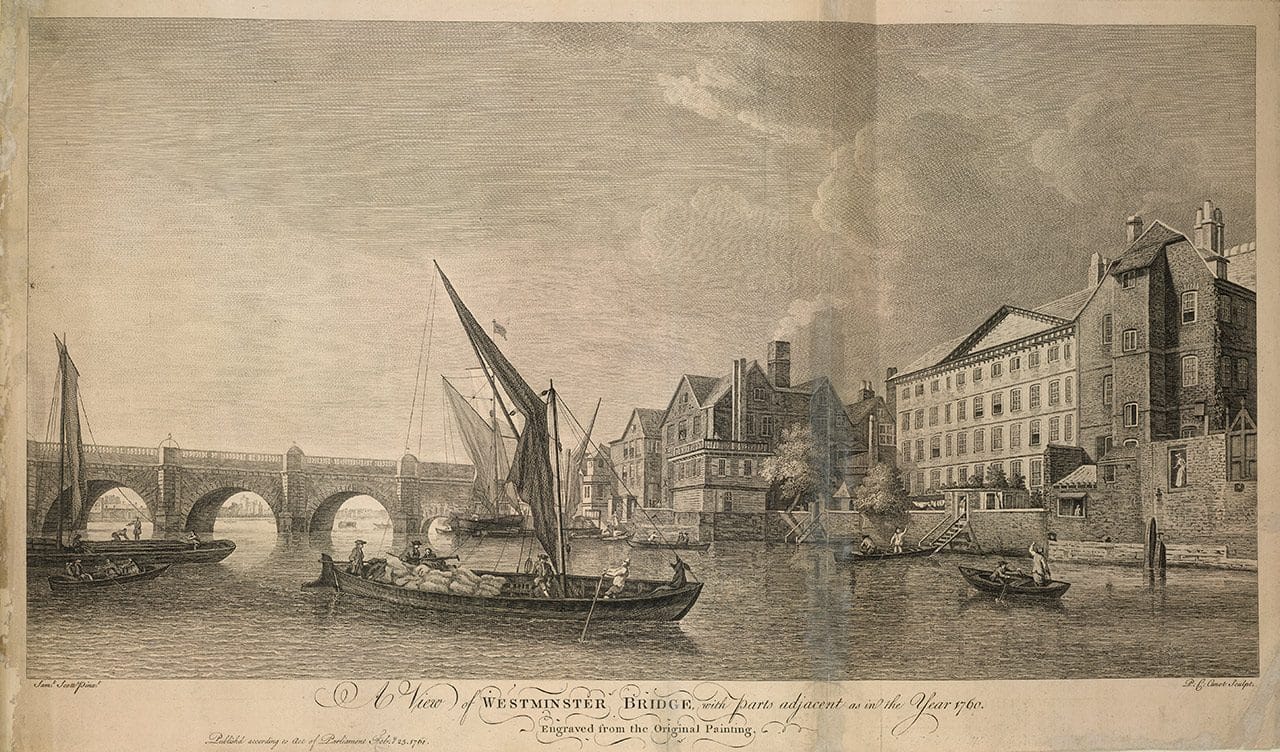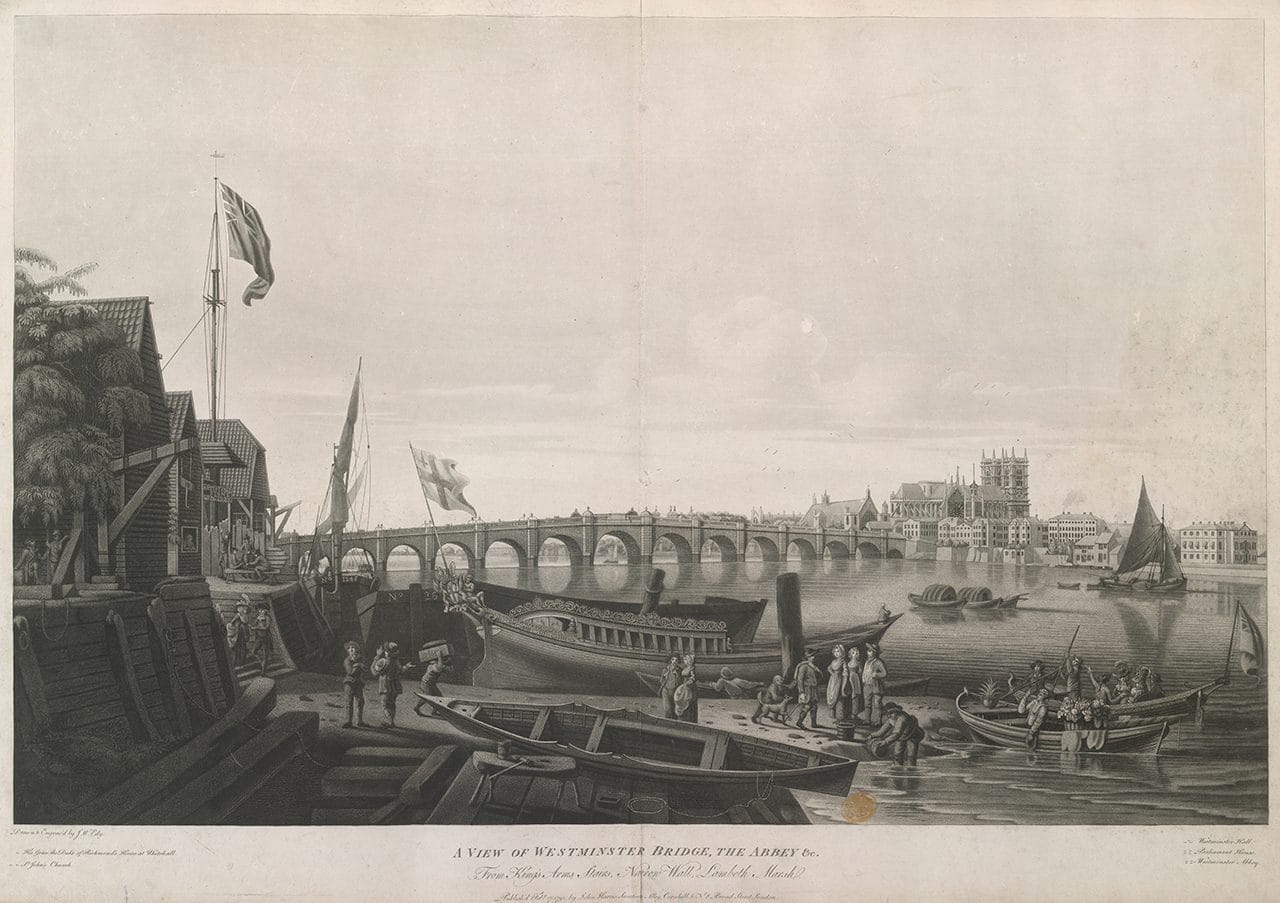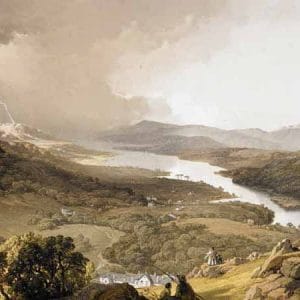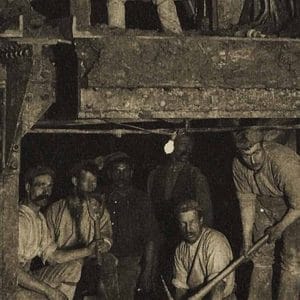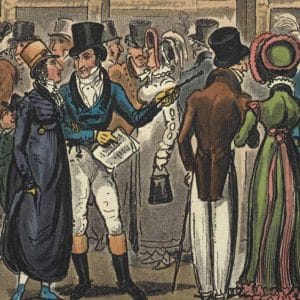
William Wordsworth’s ‘Composed upon Westminster Bridge’
出版日期: 1807 文学时期: Romantic 类型: Romantic poetry
‘Composed upon Westminster Bridge, September 3, 1802’ is a sonnet by the Romantic poet William Wordsworth describing an early morning view of London and the River Thames. Inspiration for the poem was provided by a journey made by Wordsworth and his sister Dorothy to Calais. At dawn they boarded the coach from Charing Cross to Dover. In her journal, Dorothy described crossing Westminster Bridge, noting London’s beauty: ‘there was even something like the purity of one of nature’s own grand spectacles’. Wordsworth conveyed these feelings in his sonnet, completing it on their return journey in September.
‘Composed upon Westminster Bridge’
It is ironic that perhaps the most famous poem about London in the English language should have been composed by a poet who elsewhere claimed to be appalled and alienated by the metropolis, and who sought a real as well as poetic refuge in the distant Lake District. Yet in this sonnet London, to the poet’s eloquent surprise, becomes as beautiful as a natural landscape. It is transformed by the brightness of the morning and is apparently unpeopled. The reference to ‘the smokeless air’ should alert us to the fact that, from early in the morning when households lit their fires, the capital would normally be shrouded in smoke. To see it ‘smokeless’ would be an extraordinary thing. Equally, the streets would usually be full not just of people, but also of horses and wagons, and would echo with the cries of every kind of vendor. The city’s silence in the poem is as magical as its glitter.
‘Composed Upon Westminster Bridge’ read by Oliver Ford Davies. Courtesy of Naxos Audiobooks.
This is the only surviving pre-publication manuscript of the poem. It is written in the hand of Sara Hutchinson, sister of Wordsworth’s wife-to-be Mary (and herself the object of Coleridge’s unrequited passion). It is from a fair copy made for the printer of Wordsworth’s collection Poems, in Two Volumes of 1807, his first new published collection since Lyrical Ballads, almost a decade earlier. Sara Hutchinson transcribed many of the poems that made up this collection. The poems were published by Longman’s, and it was the publishing company that eventually donated this printer’s copy to the British Museum.
Capturing time and place
The poem’s full title, ‘Composed upon Westminster Bridge, September 3, 1802’, is characteristic. Several of Wordsworth’s poems have titles that proclaim them to have been ‘Composed…’ in the very places they describe, as if a poem could be the immediate record of an inspiration that belonged to a particular place and time. One of his greatest poems, which we usually call ‘Tintern Abbey’, is properly titled ‘Lines Written a few miles above Tintern Abbey, on revisiting the banks of the Wye during a tour. July 13 1798’. Like the Westminster Bridge sonnet, the date that is attached suggests to the reader that the poem enacts a particular, fleeting experience.
Travelling to France
The specific date was also highly significant in a way that none of his readers beyond his immediate circle could have guessed. In the 1807 Poems the poem comes just before a sequence of sonnets that charts the poet’s journey to Calais and back. In fact, Wordsworth undertook this journey, in the company of his sister Dorothy, to meet his illegitimate daughter Caroline, now nine years old, and her mother Annette Vallon. The trip had been made possible by the Treaty of Amiens in 1802 that temporarily halted hostilities between Britain and France. The Wordsworths would spend some four weeks in Calais. The trip was made necessary by William’s impending marriage to Mary Hutchinson, which took place a couple of months after his return to England. He was travelling to France to discuss this with his former lover. The poet’s vision of the city’s wonderful calm is all the more striking when one knows of the apprehension with which the poet must have been beginning his journey.
Dorothy’s journal
In notes that he dictated to his friend Isabella Fenwick in 1843, when he was in his 70s, Wordsworth said that the poem was ‘Composed on the roof of a coach, on my way to France’. Though it is likely that Wordsworth conceived outlines of the poem at the time he specifies, he probably did not complete it until early September, a month after his return from France. When he completed it he almost certainly referred to Dorothy’s account in her journal, where she describes the ‘beautiful sight’ from Westminster Bridge as they crossed it very early in the morning on their way to Dover. ‘The houses were not yet overhung by their cloud of smoke and they were spread out endlessly, yet the sun shone so brightly with such a pure light that there was even something like the purity of one of nature’s own grand spectacles’. Wordsworth elsewhere used his sister’s journal recordings as the basis for his own poetic recollections (‘I wander’d lonely as a cloud’, for instance, uses her description of the daffodils by the side of Ullswater); here the wonderful vision of London as if it were a work of nature seems learned from Dorothy’s journal entry (though this might itself reflect conversation between the siblings).
Interestingly, the date that is part of the title is given wrongly in the manuscript and later had to be corrected: the manuscript says ‘1803’ when in fact it was 1802. The mistake is evidence of the gap in time between the poem’s original composition and its eventual publication. There is one other correction, in Wordsworth’s hand, made to the manuscript: the original ‘Dull would he be of heart’ is changed to ‘Dull would he be of soul’. ‘Soul’ is evidently better, both for its religious intimation and its half-rhyme with ‘dull’, but it is impossible to know if this was a last-minute alteration or the restoration of something mis-transcribed.
Contributor: John Mullan
The text in this article is available under the Creative Commons License.
